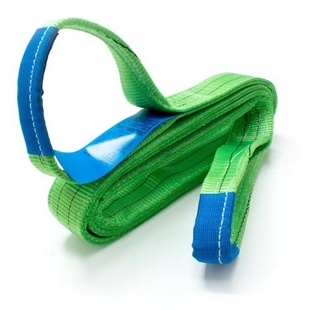Introduction:
In the fast-paced world of warehousing, the safe and efficient handling of goods is paramount to the success of operations. Forklifts have long been integral to material handling in warehouses, but the use of forklift lifting slings is emerging as a smart and versatile solution. This article explores the advantages of forklift lifting slings in warehousing, delving into their design, applications, and the multitude of benefits they bring to the table.
Understanding Forklift Lifting Slings:
Forklift lifting slings are specialized tools designed to enhance the lifting capabilities of forklifts. These slings are typically made of durable materials such as nylon, polyester, or chain, providing strength and flexibility. They are attached to the forklift's forks, extending the lifting reach and allowing for the secure lifting of loads that may be challenging to handle with forks alone.
Advantages of Forklift Lifting Slings in Warehousing:
-
Extended Lifting Reach: One of the primary advantages of forklift lifting slings is the extension of the forklift's lifting reach. The slings allow operators to reach and lift loads that may be situated in confined spaces, on high shelves, or in locations that are difficult to access directly with the forklift forks. This capability enhances the versatility of forklifts in warehousing operations.
-
Versatility in Load Handling: Forklift lifting slings offer versatility in handling a wide range of loads. Whether dealing with irregularly shaped items, long materials, or delicate goods, the flexibility of lifting slings allows for secure and efficient lifting. This adaptability is particularly beneficial in warehousing environments where diverse types of goods need to be handled regularly.
-
Reduced Risk of Load Damage: The design of forklift lifting slings minimizes the risk of damage to the load. The soft and flexible nature of materials like nylon or polyester ensures a gentle grip on the load, reducing the likelihood of scratches, dents, or other forms of damage. This is crucial in warehousing where maintaining the integrity of goods is paramount.
-
Improved Stability and Load Control: Forklift lifting slings contribute to improved stability during lifting operations. The slings distribute the load weight evenly, reducing the risk of tilting or shifting during the lift. This enhanced stability ensures greater control over the load, promoting safer and more precise material handling.
-
Time and Cost Efficiency: Using forklift lifting slings can lead to time and cost efficiency in warehousing operations. The extended reach and versatility of the slings mean that operators can complete tasks more quickly and with fewer maneuvers. This efficiency translates to increased productivity and cost savings over time.
-
Enhanced Safety for Operators: Safety is a top priority in warehousing, and forklift lifting slings contribute to creating a safer working environment. By enabling operators to lift loads from a safe distance and reducing the need for risky maneuvers, the slings help prevent accidents and injuries. The improved stability and control also contribute to safer material handling.
-
Easy Attachment and Detachment: Forklift lifting slings are designed for easy attachment and detachment to the forklift's forks. This quick and straightforward process saves time and allows for rapid adjustments when handling different loads. The ease of use contributes to the overall efficiency of warehousing operations.
-
Adaptability to Various Forklift Types: Forklift lifting slings are designed to be compatible with various types of forklifts, including counterbalance forklifts, reach trucks, and pallet trucks. This adaptability ensures that warehouses with diverse forklift fleets can leverage the benefits of lifting slings across different equipment types.
Conclusion:
In conclusion, the utilization of forklift lifting slings in warehousing is a strategic and efficient approach to material handling. The advantages of extended lifting reach, versatility in load handling, reduced risk of damage, improved stability, time and cost efficiency, enhanced safety for operators, easy attachment and detachment, and adaptability to various forklift types position these slings as valuable tools in the warehouse toolkit.
As warehousing operations continue to evolve, the need for smart and adaptable solutions becomes increasingly crucial. Forklift lifting slings not only address specific challenges but also contribute to a more efficient, safe, and streamlined material handling process. The adoption of forklift lifting slings reflects a commitment to lift safely and lift smart in the dynamic world of warehousing.


No comments yet